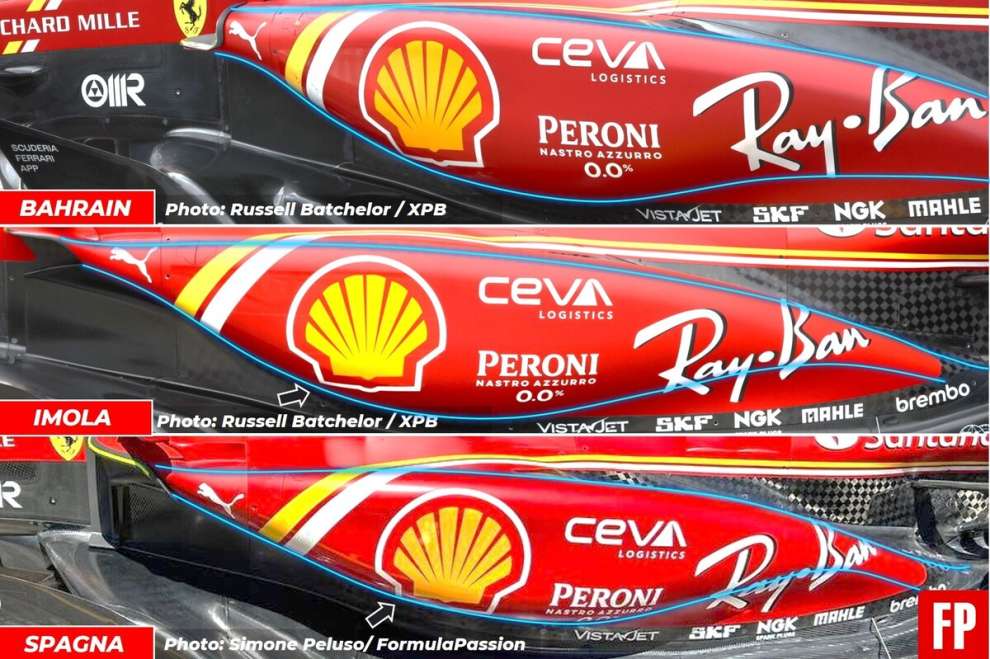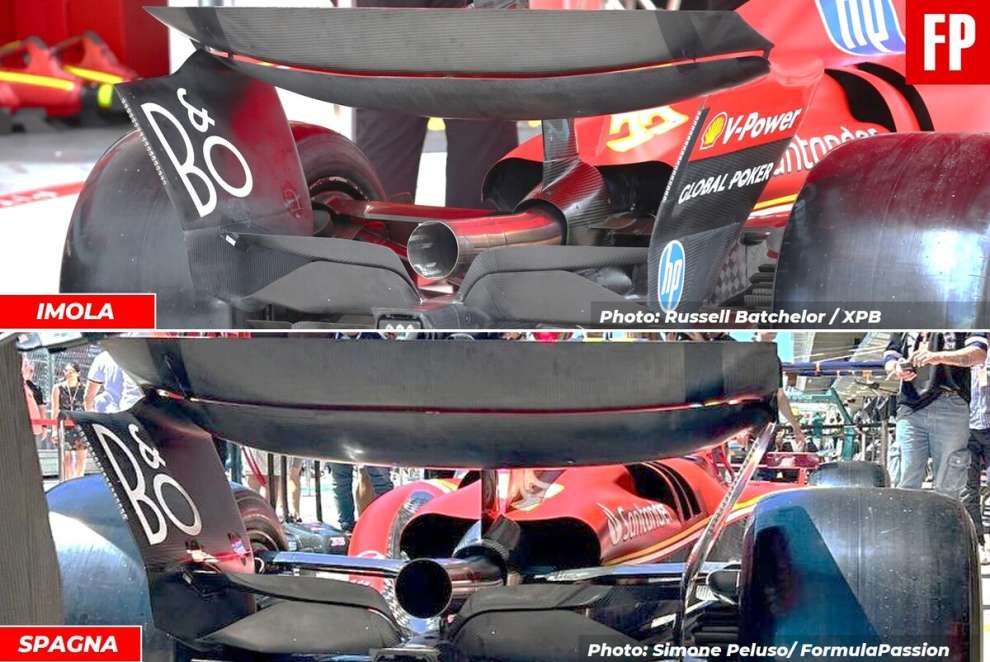By Carlo Platella
Ferrari plays in advance and introduces in Spain the second major update package. The developments are important ones, intervening in the most sensitive area of the ground effect Formula 1 cars, the bottom, now updated in volumes, in the flow conveyors, in the diffuser and along the external edge. As a corollary, the SF-24 is now also equipped with slimmer bellies and a new package of rear wings, seeking greater aerodynamic efficiency.
The change that cannot be seen
The most important changes on the Red remain hidden from the external observer, being located under the car. However, from the documents published by the Federation we learn that Ferrari has developed a completely new diffuser, with renewed expansion volumes and a different fairing of the lower body and keel. Maranello has turned its attention to the rear axlebut to improve the extraction of flows from the bottom and the generation of aerodynamic load, but to achieve this the Cavallino intervened along the entire lower surface of the car.
The new diffuser is designed by virtue of a different aerodynamic structure of flows and vortices that flow under the SF-24, achieved through other modifications made in the most advanced part of the car. On the Ferrari of Barcelona for example the Venturi channels change on the sides of the bottom, both in terms of the volume trend and the grid of flow conveyors located at the entrance.
Added to this are some adjustments to the external edge of the bottom, inconspicuous but crucial to protect the lower environment from external turbulence. Overall, Ferrari has worked carefully for improve the propagation of flows towards the rearensuring that these arrive with greater energy to the new speaker.
Slimmed down bodywork
Also based on the new rear end, a new bodywork was also designed in Maranello. It’s about an evolution of the package introduced in Imola, flaring the lower part of the bellies more. Once again the objective is to facilitate the flow of flows along the lower contour of the bodywork, conveying them with greater energy towards the rear to facilitate the functioning of the new diffuser and the generation of load from the bottom.

“It should guarantee a small increase in downforce which it will help us be a little faster everywhere”, Carlos Sainz’s comment on the new package during the Thursday conference. The attention paid by Ferrari to the central-rear portion of the car, acting directly on the bottom, confirms the picture of a car without particular balance defects, with the team thus able to dedicate development to aerodynamic efficiency, one of the most rewarding aspects for the performance. However, the search for aerodynamic load with ground effect Formula 1 cars is never risk-free, requiring an adjustment of the set-up so as not to compromise the car’s driveability.
New wings
The changes to the bottom, diffuser and bellies represent general updates for Ferrari, which however in Spain is also equipped with new adaptations to the individual tracks. In fact, one debuts new medium-high load rear wingrevised both in the main profile and in the mobile flap of the DRS, widening the wings of the Cavallino which, with the exception of Monaco, had always used the same wing before Barcelona.

A little further down, a new beam-wing makes its appearance, also with a medium-high load and revised in both profiles. Ferrari is thus equipped with two new wings, which will also interact aerodynamically with the new diffuser. A decidedly intense testing program is outlined for the Scuderia from Maranello, with preparation for the Grand Prix on the one hand and the study of updates on the other.
#Spain #Ferrari #important #updates #analysis
